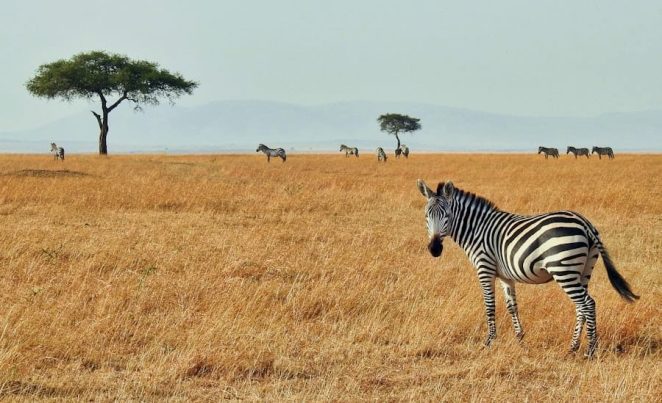Ethiopia is a country renowned for its cultural diversity, boasting over 80 distinct ethnic groups, each with its own language, traditions, and customs. This rich tapestry of cultures reflects Ethiopia’s long and complex history, incorporating influences from ancient civilizations, colonial powers, and neighboring African nations. The country’s cultural landscape is characterized by colorful festivals, traditional music, and dance performances that captivate both locals and visitors.
The diverse cultural heritage of Ethiopia is evident in the traditional attire, jewelry, and hairstyles of various ethnic groups. Each community has developed its own unique style of dress, often featuring intricate patterns and vibrant colors that symbolize their heritage and identity. The linguistic diversity of the country further underscores its multicultural nature, with languages such as Amharic, Oromo, Tigrinya, and Somali being spoken across different regions.
Ethiopia’s cultural diversity is celebrated through numerous events and festivals throughout the year. These gatherings provide opportunities for different ethnic groups to showcase their traditions and customs, fostering a sense of national unity while preserving individual cultural identities. This blend of diverse cultures creates a dynamic and vibrant society that continues to shape Ethiopia’s national identity and global reputation.
Key Takeaways
- Ethiopia is a country with rich cultural diversity, boasting over 80 different ethnic groups and languages.
- The historical and architectural wonders of Ethiopia include ancient rock-hewn churches, castles, and monasteries that showcase the country’s unique heritage.
- Ethiopian cuisine is known for its diverse flavors and unique cooking techniques, with staple dishes like injera, doro wat, and kitfo.
- Traditional music and dance are integral parts of Ethiopian culture, with various styles and rhythms reflecting the country’s diverse ethnic groups.
- Religious and spiritual practices in Ethiopia are deeply rooted in the country’s history, with Orthodox Christianity and Islam being the two major religions.
Historical and Architectural Wonders of Ethiopia
Rock-Hewn Churches of Lalibela
One of the most iconic landmarks in Ethiopia is the rock-hewn churches of Lalibela, a UNESCO World Heritage site that consists of 11 medieval monolithic churches carved out of solid rock. These remarkable structures are a testament to the skill and craftsmanship of the ancient Ethiopian civilization, and continue to be a place of pilgrimage and worship for Christians from around the world.
Ancient Ruins and Monuments
In addition to its religious architecture, Ethiopia is also home to ancient ruins and monuments that offer a glimpse into the country’s storied past. The ancient city of Aksum, once the center of the Aksumite Empire, is home to towering obelisks and royal tombs that date back to the 4th century. These impressive structures are a testament to the wealth and power of the ancient Aksumite civilization, and continue to be a source of fascination for historians and archaeologists.
A Window into the Past
The historical and architectural wonders of Ethiopia offer a window into the country’s rich past, and continue to be a source of pride and inspiration for Ethiopians today.
Ethiopian Cuisine and Culinary Traditions

Ethiopian cuisine is renowned for its unique flavors, aromatic spices, and communal dining traditions. The country’s culinary heritage is a reflection of its diverse cultural influences, with dishes that draw inspiration from various regions and ethnic groups. One of the most iconic Ethiopian dishes is injera, a spongy flatbread made from teff flour that serves as the foundation for many meals.
Injera is often served with a variety of stews and curries, such as doro wat (spicy chicken stew) and misir wat (spicy red lentil stew), creating a communal dining experience where everyone shares from the same platter. In addition to its flavorful stews and breads, Ethiopian cuisine also features a variety of vegetarian dishes that are both delicious and nutritious. Dishes such as gomen (collard greens), atkilt wat (spiced cabbage and carrots), and shiro (spiced chickpea stew) are popular choices for those looking for meat-free options.
The use of aromatic spices such as berbere (a fiery red spice blend) and mitmita (a spicy chili powder) adds depth and complexity to Ethiopian dishes, creating a culinary experience that is both bold and satisfying. Ethiopian cuisine is a celebration of flavor, tradition, and community, making it an integral part of the country’s cultural identity.
Traditional Music and Dance of Ethiopia
| Traditional Music and Dance of Ethiopia | Metrics |
|---|---|
| Number of traditional musical instruments | More than 50 |
| Popular traditional dances | Eskista, Gurage, Amhara, and Tigray |
| Role of music and dance in Ethiopian culture | Integral part of religious ceremonies, social gatherings, and celebrations |
| Influence of traditional music on modern Ethiopian music | Significant influence on contemporary Ethiopian music genres |
Traditional music and dance are integral parts of Ethiopian culture, with each ethnic group having its own unique styles and rhythms. From the hypnotic movements of the Eskista dance to the soul-stirring melodies of traditional instruments such as the krar (lyre) and masenqo (single-stringed fiddle), Ethiopian music and dance are expressions of joy, sorrow, and celebration. The Eskista dance, characterized by its shoulder movements and rapid footwork, is one of the most popular traditional dances in Ethiopia, often performed at weddings, festivals, and other special occasions.
In addition to its traditional dances, Ethiopia is also home to a rich musical tradition that spans various genres and styles. From the haunting melodies of traditional Azmari singers to the modern sounds of Ethiopian pop music, the country’s musical landscape is as diverse as its cultural heritage. Traditional instruments such as the kebero (drum) and washint (flute) are often used in traditional music performances, adding depth and rhythm to the melodies.
Whether it’s the lively rhythms of traditional dance or the soulful sounds of traditional music, Ethiopian culture comes alive through its vibrant musical traditions.
Religious and Spiritual Practices in Ethiopia
Religion plays a central role in Ethiopian culture, with Christianity and Islam being the two dominant faiths in the country. The Ethiopian Orthodox Tewahedo Church, one of the oldest Christian denominations in the world, has a rich religious tradition that dates back over 1,600 years. The church’s unique blend of ancient Judaic practices and Christian beliefs has resulted in a distinct form of worship that includes colorful ceremonies, chanting, and intricate religious art.
The rock-hewn churches of Lalibela are among the most iconic symbols of Ethiopian Orthodox Christianity, attracting pilgrims from around the world who come to witness these remarkable structures. In addition to its Christian heritage, Ethiopia is also home to a significant Muslim population, particularly in the eastern part of the country. The Islamic tradition in Ethiopia has its own distinct practices and customs, with mosques such as the Al Nejashi Mosque serving as important religious centers for the Muslim community.
The religious diversity in Ethiopia is a reflection of its multicultural society, with both faiths coexisting peacefully and contributing to the country’s rich cultural tapestry. Whether it’s the colorful processions of Orthodox Christian festivals or the call to prayer from minarets across the country, religion is an integral part of Ethiopian culture.
Natural Beauty and Landscapes of Ethiopia

Mountainous Wonders
The Simien Mountains National Park, a UNESCO World Heritage site, is home to dramatic cliffs, deep valleys, and rare wildlife such as the gelada baboon and Walia ibex. The park’s stunning vistas and diverse ecosystems make it a popular destination for hikers and nature enthusiasts seeking to explore Ethiopia’s natural wonders.
Otherworldly Landscapes
In addition to its mountainous terrain, Ethiopia is also home to the surreal landscapes of the Danakil Depression, one of the hottest and lowest places on earth. This surreal landscape features colorful salt flats, volcanic craters, and bubbling lava lakes, creating an otherworldly environment that has been compared to a lunar landscape.
Geological Diversity
The Danakil Depression offers a glimpse into the raw power of nature and serves as a reminder of Ethiopia’s geological diversity.
Preserving and Celebrating Ethiopian Culture
Preserving and celebrating Ethiopian culture is an important part of national identity, with efforts being made to safeguard traditional practices and customs for future generations. Organizations such as the Ethiopian Heritage Trust work to document and preserve Ethiopia’s cultural heritage through research, education, and advocacy. Additionally, cultural festivals such as Timket (Epiphany) and Meskel (Finding of the True Cross) provide opportunities for Ethiopians to come together and celebrate their shared traditions through music, dance, and religious ceremonies.
In addition to formal organizations and festivals, efforts are also being made at the grassroots level to preserve traditional crafts such as weaving, pottery, and basketry. These crafts are not only important for preserving cultural traditions but also provide economic opportunities for artisans in rural communities. By supporting these traditional crafts, Ethiopians are able to celebrate their cultural heritage while also contributing to sustainable development.
In conclusion, Ethiopia’s cultural diversity is a source of pride and fascination for both locals and visitors alike. From its rich history and architectural wonders to its vibrant music and dance traditions, Ethiopia’s cultural heritage is as diverse as its natural landscapes. By preserving and celebrating these traditions, Ethiopians are able to honor their past while also embracing their future.
If you’re interested in exploring historical sights in Africa, you should check out this article on Luderitz and Walvis Bay. These two cities in Namibia have a rich history and are home to some fascinating landmarks.


